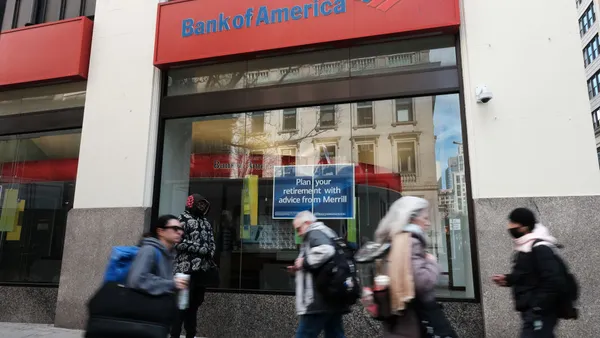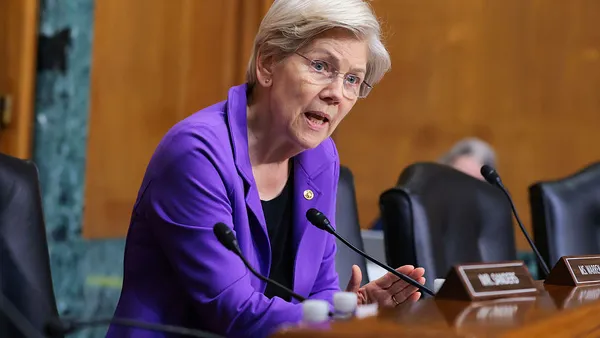Dive Brief:
- U.S. Bank aims to achieve net-zero greenhouse-gas emissions by 2050 — including financed emissions — among a host of other environmental goals, it said Wednesday in a press release. The move makes it the first large regional bank in the U.S. to do so, according to American Banker.
- The Minneapolis-based bank pledged $50 billion by 2030 toward financing customers and projects that have a positive impact on the environment. The bank is establishing a framework that will allow it to more clearly track that figure, and aims to release further details by the end of 2022, it said.
- U.S. Bank also wants to source 100% renewable energy within its operations by 2025, it said.
Dive Insight:
Wednesday’s environmental goals give U.S. Bank another chance to show it’s thinking like a bigger bank rather than merely growing into one. September’s $8 billion deal to buy MUFG Union Bank repositioned the Minneapolis lender as the nation’s fifth-largest retail bank — and largest regional. U.S. Bank’s climate-friendly aims allow it to set the tone for the rest of the sector.
The four largest U.S. retail banks — plus investment banks Goldman Sachs and Morgan Stanley — all committed to net-zero emissions by 2050 between September 2020 and March of this year.
U.S. Bank announced Wednesday it has joined the Partnership for Carbon Accounting Financials (PCAF), a consortium that intends to standardize the way banks measure and reduce their climate impact. The bank pledged to measure and disclose its carbon footprint using the consortium’s standards. Morgan Stanley, Citi and Bank of America joined the group in July 2020.
"Managing our business in an environmentally sustainable manner is an important component of corporate responsibility and critical to the health of our economy," U.S. Bank CEO Andy Cecere said in Wednesday’s press release. "We continue to take steps to enhance how we assess the financial and operational risks climate change poses to our company, our clients and the world."
U.S. Bank also pledged Wednesday to incorporate climate risk into its risk management framework, and said it has appointed a new climate risk executive to lead the strategy and coordination of climate-related risk management activities. That aligns with recommendations by regulators including New York’s Department of Financial Services and, presumably, the Office of the Comptroller of the Currency. The bank added it would disclose its climate risk in line with recommendations from the Task Force on Climate-Related Financial Disclosures (TCFD).
The bank’s $50 billion green financing pledge appears to take a page from the Goldman Sachs playbook. The investment bank in December 2019 said it would commit $750 billion over 10 years in loans, underwriting, advisory services and investments toward companies and projects focused on renewable energy, sustainable transportation, affordable education and other areas. When Goldman made its net-zero pledge in March, it also detailed that it had put $156 billion toward that decade-long green financing goal.
U.S. Bank isn’t alone among banks its size in working climate risk into its overall financial picture. Birmingham, Alabama-based Regions in June released its first climate risk report aligning with TCFD standards. And even smaller banks, such as Amalgamated Bank, have made net-zero pledges. New York City-based Amalgamated last month committed to reaching net-zero greenhouse-gas emissions by 2045 — five years sooner than standard ambition.
As for U.S. Bank, it said Wednesday it is continuing to work toward a goal of 60% emissions reduction by 2044. The bank said it reached 44% reduction in 2019 — 10 years earlier than initially expected.
The Minneapolis lender also said its community development corporation would begin offering debt financing on renewable energy projects beginning this year.














